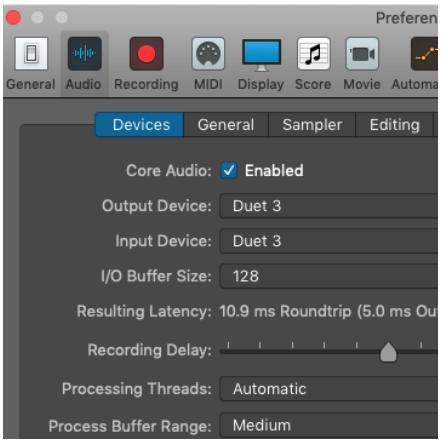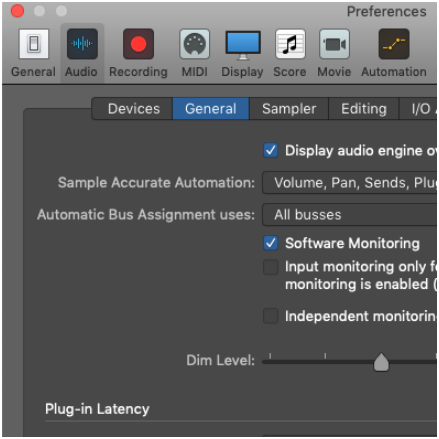Using Duet with Apple Logic
To configure Apple Logic Pro to use Duet:
1. In the Logic Pro menu bar, choose Logic Pro > Preferences > Audio in the menu bar, then click the Device tab.
2. Check the Core Audio checkbox; set Output Device and Input Device to Duet (it shows Duet 3, but the same can be applied to any version of the Duet).
3. Set I/O Buffer Size to 128 or higher.
4. Click Apply.

To configure Logic Pro for Direct or Software Monitoring Workflow:
1. In the Logic Pro menu bar, choose Logic Pro > Preferences > Audio, then click the General tab.
● Check the Software Monitoring box to monitor through Logic while recording.
● Leave the Software Monitoring box unchecked for Direct monitoring through the Apogee Control 2 low latency mixer.
2. In Apogee Control 2, set Main and Headphone Sources.
● Set to SW:Playbacks > Playback 1-2 for Software monitoring.
● Set to Direct Mixers: Mixer for Direct monitoring through the Apogee Control 2 mixer.

To access Duet inputs & outputs in Logic Pro:
1. From the Logic Pro menu bar, choose Mix > I/O Labels.
2. Choose the Provided by Driver labels by clicking on the first label, dragging your mouse down until all Duet labels are highlighted, then unclick.
3. Close the I/O labels window.
4. Select Duet inputs and outputs in any Logic Pro Channel Strip.